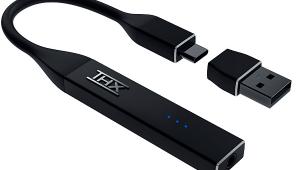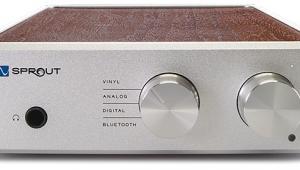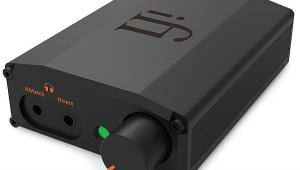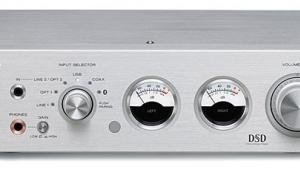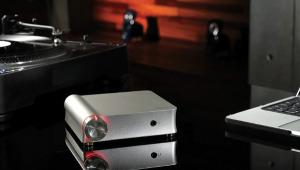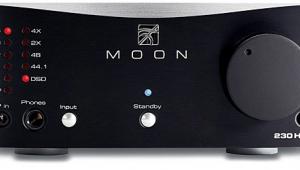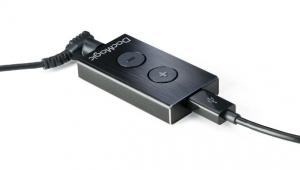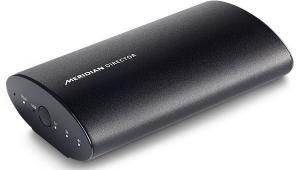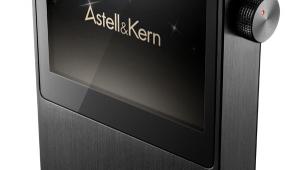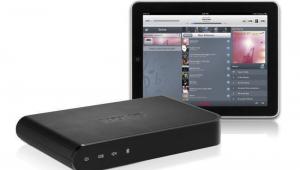Wadia 121 Decoding Computer Page 2
With Headphones
The Wadia doesn’t need a system to make music. It is also a headphone amp. For further evaluation of its USB input—and also to use its coaxial input, for the first time, with a CD player—I delved into my headphone drawer. My reference is the classic AKG K240, which I value for its rich bass and midbass; though I gave some listening time to the original blue Bose TriPort, which (believe it or not) I value for its overall balance and greater efficiency. Most of my headphone listening is on the down-low; hence the odd and antiquated selection. If you suggested that someone in my position should have a dozen top manufacturers rush me their latest and greatest, I wouldn’t put up an argument.
Signal sources were a Lenovo Win 7 desktop PC serving as USB source and a Rotel RCD-965BX Red Book CD player serving as coaxial-out disc transport. My method was to throw my library’s best high-res FLAC files at the USB input, then downshift to MP3, and finally compare the USB and coaxial inputs with high-res and CD-quality material.
With the high-res files, the Wadia did its best, and its best was fabulous. Mainstream pop and rock benefited from the FLAC-and-DAC combo as much as more rarefied audiophile classical and jazz: I could single out the microdynamic trajectory of each of the double-tracked vocals in Stevie Wonder’s “Higher Ground” (Innervisions, 24/192). Even a heavy metal staple like Deep Purple’s Machine Head (24/96) was full of unexpected detail, variety, and pinpoint imaging.
MP3s, though less detailed overall, still sounded unexpectedly rich and listenable. The slow decays throughout Brian Eno’s new ambient masterpiece Lux (320 kbps) were appropriately lengthy and luxurious. The DAC uncovered as much of the multi-layered goodness of Donald Fagen’s Sunken Condos as an MP3 ripped at 192 kbps would allow, though I’m thankful it didn’t try to enhance the slightly airless top end of the content likely caused by the low data rate.
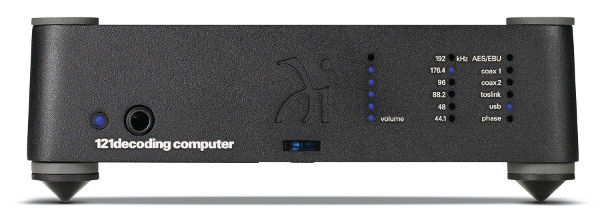
Well-recorded strings remain crucial distinction-makers to my ears, and to sort out some variables, I compared several versions of Beethoven’s Fifth Symphony with Carlos Kleiber leading the Vienna Symphony Orchestra. FLAC at 24/88.2 via USB easily beat CD at 16/44.1 via coax, revealing the latter’s relative coarseness when A/B’d. But was I hearing only the difference between high- and mid-res content, or was there also some additive effect from the DAC’s handling of USB versus coax input? To find out, I ripped the CD to an uncompressed WAV file. The 16-bit WAV via USB sounded just like the 16-bit CD via coax—and the 24-bit FLAC via USB was superior to them both—so the resolution of content trumped input type. In the 16-bit apples-to-apples comparison, the Wadia seemed to work just as well with the CD player as it did with the computer. To see if the result was repeatable, I ripped a CD-R with familiar test tracks to WAV and compared the WAV files via USB to the CD-R itself via coax. Once again, they were of identical CD quality to my ears.
In the Desktop System
My much-loved 2.1-channel desktop system consists of Era Design 4 monitors, a Pinnacle Baby Boomer sub, and Peachtree Audio Decco2 stereo integrated amp, along with the PC and CD player mentioned earlier. I don’t mention this system often but use it a lot, both for workday listening and after-hours listening. The silk-dome tweeters of the Eras and the hybrid tube/solid-state amp of the Peachtree tend to be forgiving—they smooth over the flaws of low-res files—though high-res files bring out the best in them.
For initial desktop listening, I retraced my steps with the same content mentioned previously. With the Era/Peachtree/Wadia system replacing the AKG/Wadia combo, FLACs still sounded lush, though not always in the same way. Stevie Wonder’s double-tracked vocals were fused together, not teased apart—though on an aesthetic level, that’s probably what the artist intended. Deep Purple’s drums were tamer—not a surprise given the Peachtree’s modest 40-watt-per-channel power output and the sub’s under-desk placement—but the proggy unison playing on “Highway Star” was still rhythmically exciting. In the MP3s, Eno’s ambient landscapes retained their stately grandeur, and Fagen’s horn charts remained a treat. In the three-way Beethoven symphony comparison, the distinction between 24/88.2 FLAC via USB and 16/44.1 CD via coax narrowed, though the higher-resolution version was still a little smoother. Once again, the two 16/44.1 sources—WAV versus original CD—sounded identical.
I wanted my final moments with the Wadia to be relaxed and unguarded, not questing and analytical, so it took its victory lap with three works by Debussy, including La Mer, with Valery Gergiev conducting the London Symphony Orchestra in a 24/48 download from the Bowers & Wilkins Society of Sound. By now, I knew what to expect from this combination of gear: The Wadia provided its usual steadfast account of the scrupulous recording then stepped back to let the speakers and amp offer their usual tubey feel-good euphonic treatment. I could close my eyes and imagine myself in a concert hall with better-than-average acoustics. Though the music sounded like high-res digital—not vinyl—my brain still involuntarily registered surprise at the lack of clicks and pops. I suppose it associates them with a relaxed listening experience.
Home theater buffs tend not to think much about source components for music: We figure that as long as we own an Oppo, and maybe a turntable, we’re covered. That worked as long as music streaming was a low-res medium, merely a convenient plaything for background listening. But the advent of high-res downloads demands an upgrade if you want to get the best out of your investment in components and headphones. You just may need something exactly like the Wadia 121.
* Audio editor Mark Fleischmann is also the author of the annually updated book Practical Home Theater (quietriverpress.com).
